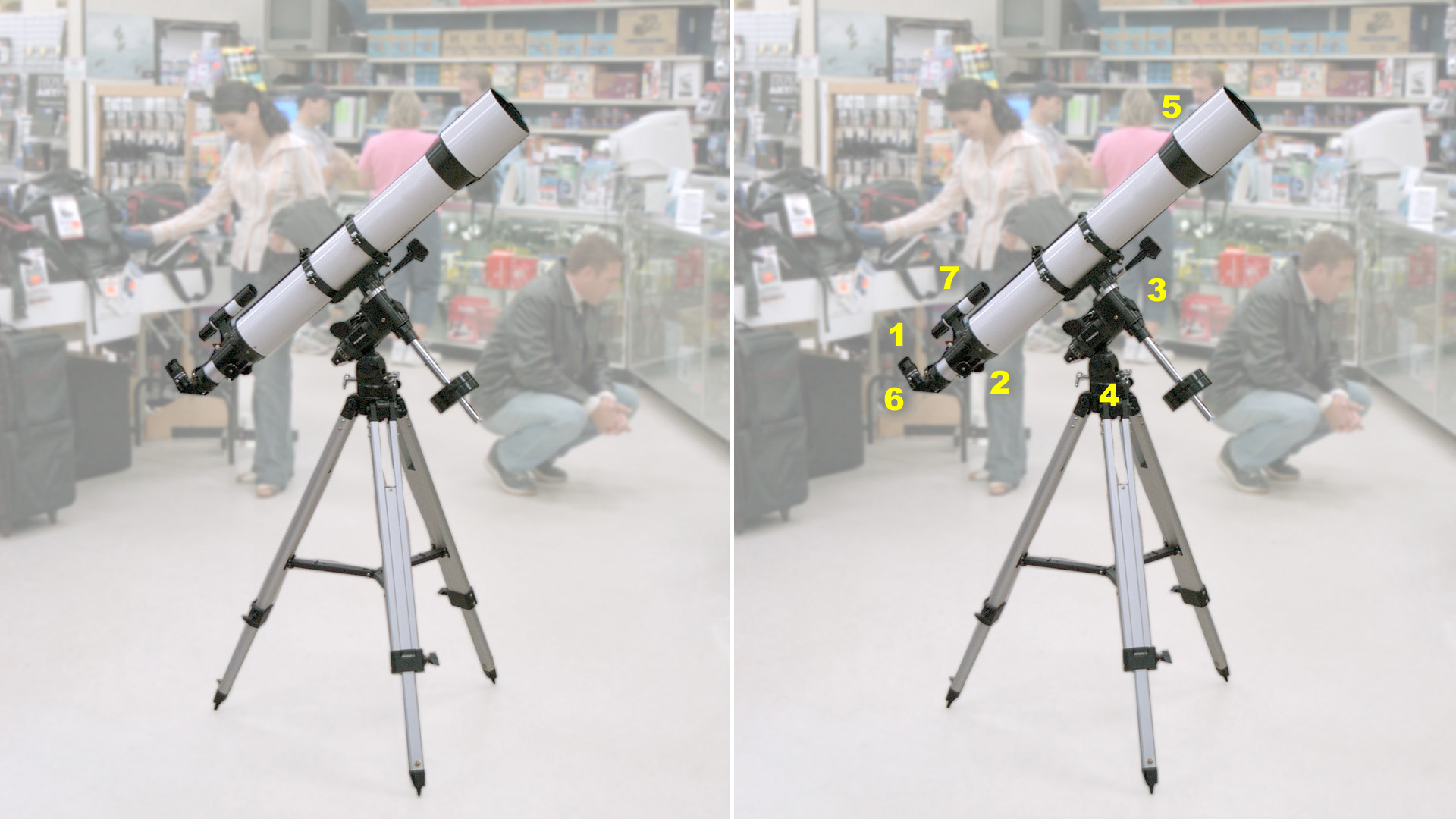Buying Your First Telescope? What You Need to Know

Hoping to buy a telescope this holiday season? To make sure that you make the right purchase — one that will foster a lifelong love of astronomy for your loved ones — here's what the experts at Sky & Telescope magazine had to say.
"Don't expect a lot from the majority of telescopes costing less than $200, and certainly be wary of anything sold in a toy shop or department store," Sean Walker, equipment editor of Sky & Telescope magazine, said in a statement.
"Do some research before buying, and then go to a reputable store or online dealer that specializes in telescopes or related products, such as cameras or consumer electronics." [Check out Space.com's Best Telescopes for the Money 2016 Reviews and Guide]
Picking a type
While telescopes come in many different forms, there are three general types to choose from, Sky & Telescope said. There are refractors, which collect light with lenses; reflectors, which use mirrors; and compound telescopes, which are hybrids of the two.
Refractors feature a lens at the front of the telescope's tube. They don't require much effort to maintain, but they get expensive as the size of the lens gets bigger. There are two main types of refractors: apochromats and achromats. You should use apochromats because they offer better optical quality, even though they are more expensive, Sky & Telescope said.
Reflectors are a more affordable option than refractors, but they require more maintenance, because their optics can fall out of alignment. To gather light, reflectors use a curved mirror at the back end of the telescope's main tube.
Compound telescopes use both lenses and mirrors to gather light, and they're quite portable, because their tubes are more compact and lighter. The most popular designs are Schmidt-Cassegrains and Maksutov-Cassegrains.
Breaking space news, the latest updates on rocket launches, skywatching events and more!
Pay attention to optical quality when making your purchasing decision, and also choose a stable mount that makes it easy for you to maneuver the scope around the sky. It's best to try out telescopes before buying them, perhaps by visiting your local astronomy club. If possible, buy new (so that you know what you're getting) and avoid buying online unless there is a good return policy, Sky & Telescope added. [Best Telescope for Beginners (Ready to Use) - 2016 Guide]
Telescope features
There's some lingo to learn when you're buying a telescope, but Sky & Telescope provided some brief definitions for the most relevant terms.
Aperture refers to the diameter of the primary lens, or mirror, in a telescope. It is not only important for gathering light, but also for seeing detail. Larger apertures collect more light, which means that you can see fainter objects (such as galaxies) or smaller features that are on a solid body (such as craters on the moon).
Focal length refers to the distance between the primary lens/mirror and the point where the object is brought into focus. The focal length is important, because it's a factor in how well a telescope magnifies objects. To figure out the magnification, divide the focal length of the telescope by the focal length of the eyepiece: If you have a 25-millimeter eyepiece and a refractor of 900 mm, the magnification is 36 power, written as 36x (or, 900 / 25 = 36). To avoid fuzziness, make sure to magnify a telescope to no more than twice the aperture of your telescope in millimeters (or 50 times the aperture in inches).
A finder is an observing aid that sits on the telescope. It's good to have one, because it makes it easier for you to find objects in the sky; looking through the telescope itself can be difficult at high magnifications. Many telescopes these days use "red dot" finders, which project a red dot, or centering pattern, on the sky without magnifying the view.
Make sure to use a good mount for the telescope. An altazimuth mount can be moved up and down and side to side, and usually requires you to make manual corrections when you're watching an object move across the sky. A better option can be an equatorial mount, with one axis aligned parallel to the Earth's axis of rotation. If you live in the Northern Hemisphere, you orient an equatorial by pointing at the North Star, Polaris.
More sophisticated users may want computerized telescopes, which can automatically move in the right direction to track objects in the sky (once the telescope is aligned). Usually, you need to input the date, time and location of your session before starting. Some systems require you to point the telescope at two or three bright objects in order to calibrate it. This is best for advanced users and those with a good budget; the lower-priced telescopes in this range tend to have small apertures. [Best Hobbyist Telescopes (Assembly Required) - 2016 Guide]
Sky & Telescope has more information on buying a telescope here; as well as a list of astronomy clubs around the world.
Follow Elizabeth Howell @howellspace, or Space.com @Spacedotcom. We're also on Facebook and Google+. Original article on Space.com.

Elizabeth Howell (she/her), Ph.D., was a staff writer in the spaceflight channel between 2022 and 2024 specializing in Canadian space news. She was contributing writer for Space.com for 10 years from 2012 to 2024. Elizabeth's reporting includes multiple exclusives with the White House, leading world coverage about a lost-and-found space tomato on the International Space Station, witnessing five human spaceflight launches on two continents, flying parabolic, working inside a spacesuit, and participating in a simulated Mars mission. Her latest book, "Why Am I Taller?" (ECW Press, 2022) is co-written with astronaut Dave Williams.



